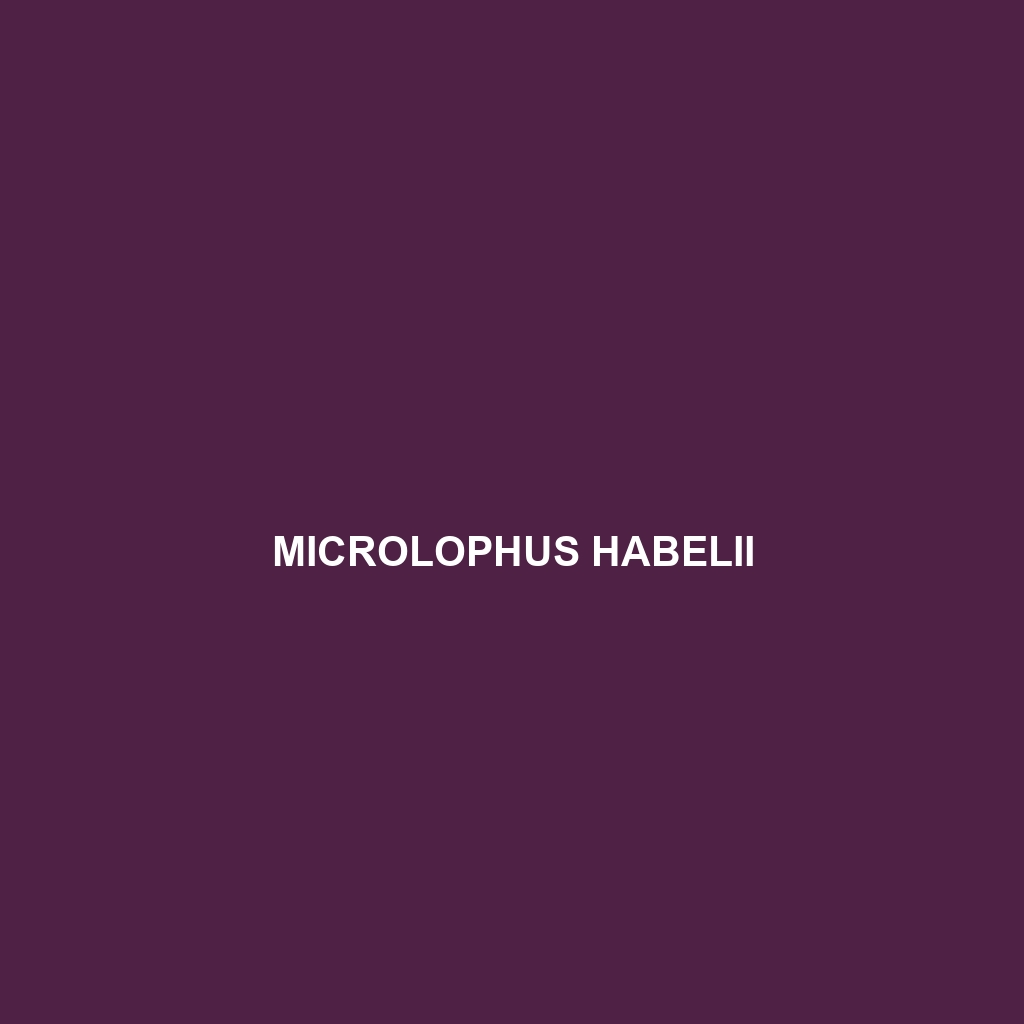Common Name
Microlophus habelii
Scientific Name
Microlophus habelii
Habitat
Microlophus habelii is primarily found in the unique and diverse ecosystems of the Galápagos Islands. This species inhabits volcanic terrains, shrublands, and coastal areas where lava fields meet marine environments. The temperate climate of the islands, with its oscillating dry and wet seasons, plays a crucial role in shaping the habitat of Microlophus habelii. Occasionally, they can be found in more arid regions characterized by low vegetation and scattered cacti. This unique habitat is essential for their survival as it provides shelter, food resources, and breeding grounds. The presence of both terrestrial and marine zones allows for fascinating ecological interactions, making them an essential part of the islands’ biodiversity.
Physical Characteristics
The Microlophus habelii, also known as Habel’s lava lizard, exhibits notable physical characteristics that make it distinctive. Adult individuals typically measure between 15 to 25 centimeters in length, featuring a robust body adorned with a blend of earthy tones that may range from brown to gray. This coloration serves as effective camouflage against the rocky backgrounds of their natural habitat. One of the unique features of Microlophus habelii is their elongated snout, which assists in foraging for insects. Furthermore, their skin may display subtle patterns of spots or stripes that vary between individuals, enhancing their adaptive traits within dynamic environments.
Behavior
In terms of behavior, Microlophus habelii demonstrates interesting ecological adaptations, prominently showcasing diurnal activity patterns. These lizards are typically active during the day, basking in the sun to regulate their body temperature. Social interactions among these lizards are also noteworthy; males often engage in territorial displays, which include head bobs and push-ups to intimidate rivals. While they are not migratory, they exhibit local movements between basking sites and foraging areas. Mating rituals are particularly fascinating, with males performing elaborate courtship displays to attract females. Such behaviors make them a subject of interest for herpetologists and enthusiasts alike.
Diet
Microlophus habelii is classified as an insectivore, primarily feeding on a diet that consists of a variety of insects, spiders, and other arthropods that inhabit their rocky surroundings. Their feeding patterns usually include foraging on the ground and through crevices, where they can find hidden prey. Occasionally, Microlophus habelii may also consume plant materials, showcasing some omnivorous tendencies, particularly in times when insect availability decreases. This dietary adaptability enhances their chances of survival in fluctuating environmental conditions, especially during periods of drought.
Reproduction
The reproductive cycle of Microlophus habelii contributes significantly to their population dynamics. Mating typically occurs during the warmer months, with females laying clutches of 2 to 6 eggs in secluded sandy nests. The incubation period lasts approximately 60 to 70 days, after which the hatchlings emerge fully formed and independent. Parental care is minimal, as the hatchlings must fend for themselves immediately after birth. This strategy of producing multiple offspring is vital for ensuring the continuation of their population amidst potential threats in their habitat.
Conservation Status
The conservation status of Microlophus habelii is currently classified as vulnerable due to habitat loss, primarily influenced by human activities and climate change. The introduction of invasive species also poses significant threats to their survival. Conservation efforts are underway in the Galápagos Islands, focusing on habitat restoration and protecting natural environments from further degradation. Authorities are also implementing regulations to control invasive species that compete with native wildlife.
Interesting Facts
One of the most interesting facts about Microlophus habelii is their incredible adaptability to varying climates and environments found within the Galápagos. They have also been observed to exhibit unique color changes in response to environmental factors, allowing them to blend effectively into their surroundings. Additionally, these lizards have developed unique vocalizations to communicate with each other, showcasing a level of social complexity often overlooked in reptilian behavior.
Role in Ecosystem
Microlophus habelii plays a crucial role in its ecosystem, serving as both predator and prey. By controlling insect populations, they contribute to the overall health of their habitat. Furthermore, they serve as food sources for larger predators such as birds of prey and snakes, integrating them into the food web. Their existence supports biodiversity in the Galápagos; thus, preserving their populations is vital for maintaining ecological balance. As a component of this unique ecosystem, Microlophus habelii embodies the intricate relationships present in the Galápagos environment, reinforcing its status as a keystone species.
